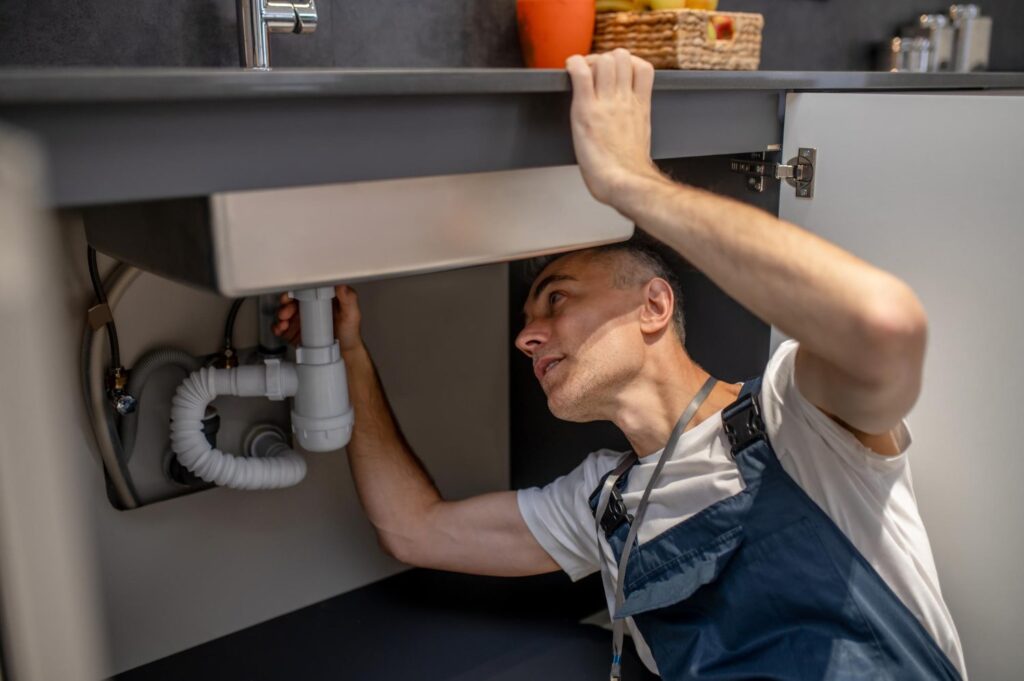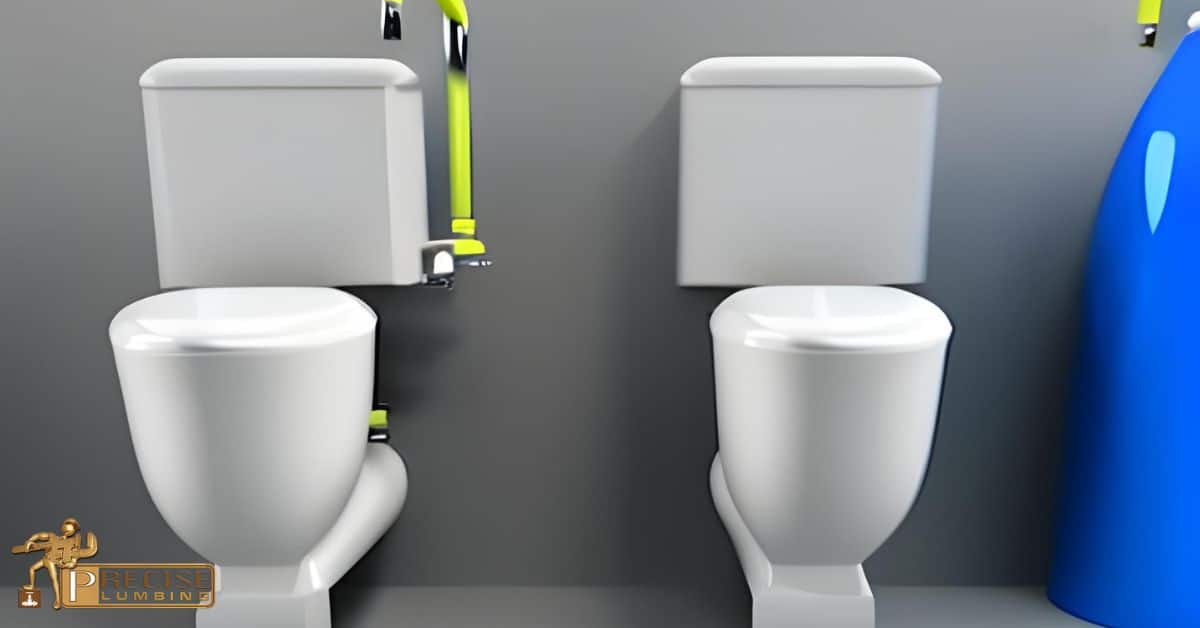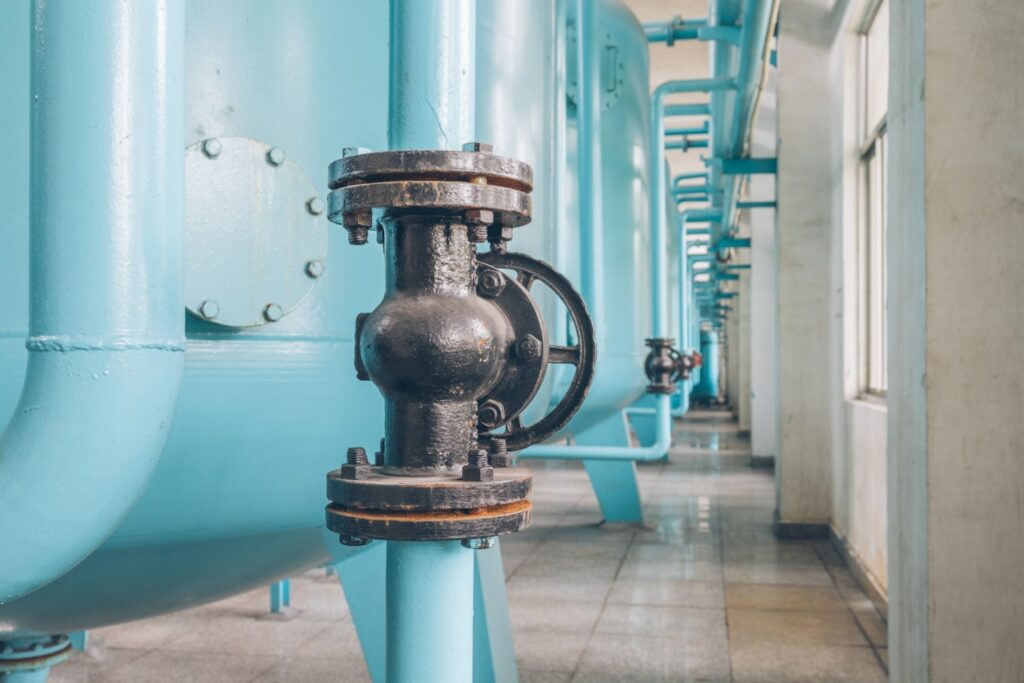Have you ever thought about how clean water gets to your faucet or how waste from your home or office is safely thrown away? In this blog, we’ll look at how these sanitary and plumbing systems work. Join us on this informative trip to learn more about the systems that keep our water clean, our environments healthy, and our lives easy.
We’ll learn about the different types of sanitary systems and plumbing systems, among other things. Get ready to dive into the world of plumbing and sewage systems and find out what makes them work.
What Are Sanitary Systems?
A sanitary system is an important part of keeping people healthy and saving the environment. It does this by taking care of and getting rid of the wastewater that comes from homes, businesses, and other buildings.
Sanitary systems are made up of a network of pipes, pumps, and treatment facilities. They make sure that wastewater is safely collected and treated so that diseases don’t spread and water sources don’t get dirty.
Sewer systems and on-site wastewater treatment systems are the two main types of sanitary systems that are widely used.
In cities, sewer systems gather wastewater from many different places and send it through a network of pipes to centralized wastewater treatment plants. Before the wastewater can be safely put back into the environment, these treatment plants use different methods to get rid of toxins and other contaminants.
On the other hand, on-site systems for treating wastewater are more popular in rural areas. A septic tank and a drain field make them up. The septic tank collects and partially cleans the wastewater on-site. The drain field then sends the partially cleaned sewage into the soil, where it is further cleaned by natural processes.
What Are Plumbing Systems?
A building’s plumbing system is very important because it delivers clean water and gets rid of waste in a safe and clean way. It is made up of a network of pipes, valves, and fixtures that make sure water gets to all parts of the house and waste goes away properly.
The two primary types of plumbing systems are the water supply system and the drain-waste-vent system:
- Water supply system: This system is in charge of getting water from a source, like a public water supply or a private well, into the house. It is made up of pipes, valves, and fittings like faucets, showers, and toilets. The water supply system makes sure that water is always available and safe to drink, cook with, and use for personal care.
- Drain-waste-vent system: The drain, waste, and vent system makes it easy for waste to leave the house and go to a sewer or septic tank. It is made up of pipes, valves, and vents that keep sewer gases from getting into the building when waste flows smoothly. This method makes sure that trash is thrown away in a clean way, stopping the spread of disease and keeping the area clean.
How Do Sanitary Systems Work?
A sanitary system is very important for protecting public health and stopping the spread of disease. It collects and gets rid of human garbage and wastewater.
The operation of a sanitary system involves the following steps:
Step 1: Collection
Toilets, sinks, showers, and other plumbing devices in homes, businesses, and factories are used to collect human waste and wastewater.
Step 2: Transportation
The trash and wastewater are moved through a network of pipes, either underground (in sewer systems) or inside the septic system itself.
Step 3a: Treatment (Sewer Systems)
The water that has been used goes to a plant that cleans it. Different methods, such as screening, sedimentation, biological treatment, and disinfection, are used at the treatment plant to get rid of pollutants and dangerous microorganisms in the wastewater.
Step 3b: Treatment (Septic Systems)
In a septic system, waste goes through natural anaerobic digestion in the septic tank, where solid waste settles, and liquid waste goes into the drain field to be treated further by the soil.
Step 4: Discharge or Reuse
After meeting certain quality standards, treated wastewater is either put back into water bodies, where it blends in with the environment, or reused for non-potable uses, such as irrigation or industrial processes.
How Do Plumbing Systems Work?
Plumbing systems are very important because they bring water into places and take waste away in a safe and clean way. These systems are made up of a network of lines, valves, and fixtures that make sure water is always available and waste is disposed of properly.
Here is a breakdown of how plumbing systems work:
Step 1: Water supply
Water comes from a public supply or a well, where it is treated to make sure it is safe to drink. The water is then sent to different fixtures in the building through a network of pipes that are managed by valves.
Step 2: Fixture usage
When a fixture, like a faucet or a toilet, is used, water runs from the supply pipes through the fixture and into the user’s needs.
Step 3: Drainage
After the water is used, it is sent through gravity or other ways to the drain-waste pipes. The wastewater goes through these lines to the sewer system or septic tank.
Step 4a: Wastewater treatment (Sewer system)
In a sewer system, the garbage is taken to a place where it can be cleaned. At the treatment plant, different steps are taken to clear contaminants, solids, and harmful microorganisms from the wastewater. These steps include screening, sedimentation, biological treatment, and disinfection.
Step 4b: Wastewater treatment (Septic system)
In a septic system, the wastewater goes into a septic tank. Solid trash falls to the bottom of the tank, where bacteria break it down through a process called anaerobic digestion. The liquid that has been partly cleaned, called effluent, is then let out into the drain field. In the drain field, the wastewater seeps through the dirt and goes through more cleaning steps before going back into the environment.
Importance of Sanitary Systems
You can’t say enough about how important sanitation services are. They are very important for keeping people healthy, protecting the earth, and making the economy grow. Here are some more reasons why sanitation methods are so important:
Health
The best way to stop diseases from spreading is to keep things clean. Sanitary systems make sure that human waste, which can contain harmful pathogens, is safely controlled and taken away from the environment. Sanitary systems lower the risk of water-borne diseases like cholera, typhoid, and diarrhea by making it less likely that people will be exposed to feces, especially in water sources. This is very important, especially in places where health care and clean water are hard to get.
Environmental Protection
Sanitary systems are important for saving the environment, especially waterways and groundwater. Without good cleaning, contaminated wastewater that hasn’t been cleaned can get into rivers, lakes, and other bodies of water, making them dirty and putting ecosystems at risk. Sanitary systems help keep the water clean and safe for future generations by treating and getting rid of the garbage in the right way.
Economic Development
Having access to clean bathrooms and toilets helps the economy grow. People are more productive when they don’t have to spend as much time and money taking care of water-borne sicknesses. Also, because these diseases cost less to treat, clean systems make it possible for communities to put their money toward other important areas of growth. People who are healthier are more likely to be able to work, which boosts total productivity and economic growth.

Importance of Plumbing Systems
Plumbing systems are very important because they keep people healthy, safe, comfortable, and in the building for as long as possible. Let’s talk more about how important water systems are:
Health
The water that comes from plumbing systems is clean and reliable, which is important for good health. Safe water is important for drinking, cooking, keeping yourself clean, and cleaning. Also, plumbing systems get rid of trash quickly and cleanly, which stops the spread of disease. By taking care of wastewater well, plumbing systems help reduce the risks that come from the bacteria and viruses that are often found in human waste.
Safety
Plumbing systems are an important part of keeping a place safe. They get rid of garbage quickly and effectively, so it doesn’t build up and make the environment dirty or spread diseases. By getting rid of wastewater the right way, plumbing systems reduce the chance of diseases like cholera, typhoid, and diarrhea that are spread by water. Also, these systems help control rainwater and flow, which makes it less likely that buildings will flood or be damaged by water.
Comfort
People who live or work in a building benefit from water systems that work well. They make sure that there is enough reliable water for things like bathing, cooking, cleaning, and cleanliness. Also, sewage systems make it possible to use hot water, which adds to comfort and improves the quality of life. With plumbing that works well, people can go about their daily lives without having to think about water-related problems or plumbing issues.
Sustainability
Water and energy conservation can be helped by plumbing systems. Fixtures that use less water, like low-flow toilets and taps with air holes, save water without affecting how well they work. Pumps and valves that use less energy save energy in water systems. Innovative designs may also include rainwater harvesting systems, which allow collected rainwater to be used for things like watering plants or flushing the toilet. By using green plumbing methods, we can save important resources and work toward a better future.
Types of Sanitary Systems
There are many different types of sanitation systems. Choosing a sanitation system relies on things like climate, water availability, cost, and what people in the community want. Some popular types of sanitary systems are listed below:
Flush toilets
People all over the world use flush toilets. They use water to get waste out of their homes and into a sewer system or septic tank. People like flush toilets because they are convenient and easy to use, but they need a steady flow of water and a good sewer system.
Latrines
Latrines are dry toilets that get rid of waste without using water. There are two main kinds:
- Pit latrines: There is a hole in the ground where people’s trash goes. Pit latrines are cheap and work well in places where there isn’t much water. But they need regular upkeep and the right way to deal with waste to keep groundwater from getting dirty.
- Composting latrines: Human waste is broken down in composting toilets in a certain way to make soil. This choice is good for the environment because it reduces the amount of trash and makes nutrient-rich compost. Composting latrines are good for places where water is scarce, but they need to be managed well and maintained regularly.
Ecosan toilets
Ecosan toilets, which are also called “ecological sanitation toilets,” use a special type of concrete to soak up human waste. This garbage is then turned into “humanure,” which is a type of fertilizer that can be used in farming. Ecosan toilets are environmentally friendly and help recycle nutrients, which makes them good for places with limited water resources. But they need the waste to be handled and managed in the right way.
Sewer systems
Sewer systems are commonly found in urban areas. They are made up of a large network of underground pipes that carry wastewater from homes, companies, and other places to a central wastewater treatment plant.
At the wastewater treatment plant, the water that has been used is cleaned in a number of steps. These steps may include physical, chemical, and biological processes that remove contaminants like bacteria, viruses, solids, and chemicals. This makes sure that the treated wastewater passes environmental standards. Once the water has been cleaned, it can be put back into water bodies or used for other things, like gardening.
Septic systems
Most of the time, septic systems are used in rural areas or in places where there are no organized sewer systems. The parts of a septic system are the septic tank and the drain field.
When wastewater gets into the septic tank, solid waste sinks to the bottom, and liquid waste is broken down by bacteria in a process called anaerobic digestion. In the drain field, the wastewater seeps through the dirt and goes through more filtration and natural cleaning. The soil works as a biological filter, removing any leftover contaminants and pathogens. This makes sure that the treated effluent is safely absorbed and doesn’t harm people or the environment.
Greywater systems
Greywater systems take water from sinks, showers, and washing machines and clean it. This treated water can be used for things like irrigation that don’t require drinking water. This cuts down on water use and puts less pressure on municipal water sources. Greywater systems need to treat and filter the water in the right way to keep it safe for its intended uses.
Rainwater harvesting systems
Rainwater harvesting systems gather and store rainwater so that it can be used for things like irrigation, washing, and household uses that don’t involve drinking it. These methods can cut down on the need for water from the city and help save water. For rainwater harvesting systems to work well, the water needs to be filtered and stored in the right way.
Types of Plumbing Systems
There are two main types of plumbing systems: water supply systems and drainage systems. Drainage systems take trash from a building and send it to a sewer or septic tank. Water supply systems bring water to a building from a source. Also, plumbing lines can be made of different things, such as copper, plastic, cast iron, and PVC.
Here are other common types of plumbing systems:
Gravity-fed systems
Most systems are gravity-fed, which means that water and waste move through the lines because of gravity. They are easy to use, don’t cost much, and work well on buildings with enough height difference to let water run. But they might not work for buildings that are a lot higher.
Pump-assisted systems
Pump-assisted systems are used in buildings where gravity-fed systems are not practical, such as in high-rise buildings or places with low water pressure. Pumps make it easier for water and wastewater to move through the pipe system. Pump-assisted systems are more expensive to set up, but they can be made to work for buildings of any height.
Solar-powered systems
Pump-assisted systems that use solar power to power the pumps are called solar-powered systems. They offer a way to get energy that is sustainable and good for the earth. This makes us less reliant on traditional energy sources. But solar-powered systems may be more expensive to set up at first than standard systems that use pumps.
The choice of the plumbing system is based on things like the size and height of the building, the materials that are accessible, the budget, and how sustainable the building is. It is important to think about these things and choose a method that fits the building’s needs the best.
When we know how sanitary and plumbing systems work, we can better understand how important they are to our daily lives. These systems take care of our health, happiness, and well-being by giving us clean water and getting rid of waste in a safe and clean way.
Whether you have a plumbing problem, need repairs, or want to improve, it’s important to get help from a professional. Because of this, hire Precise Plumbing for all your home plumbing needs.
Precise Plumbing is the best choice for any plumbing problems you may have because of our team’s knowledge, dedication to good service, and dedication to customer satisfaction. Don’t be afraid to get in touch with us if you want reliable and effective plumbing services that will give you peace of mind. Trust Precise Plumbing with your Alliston home’s plumbing needs today and make the smart choice.


